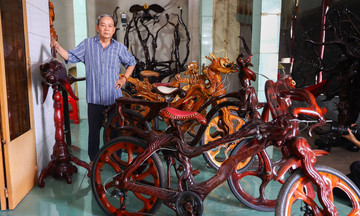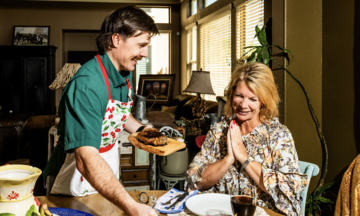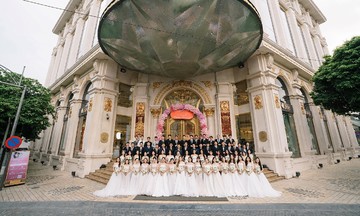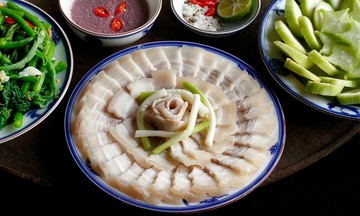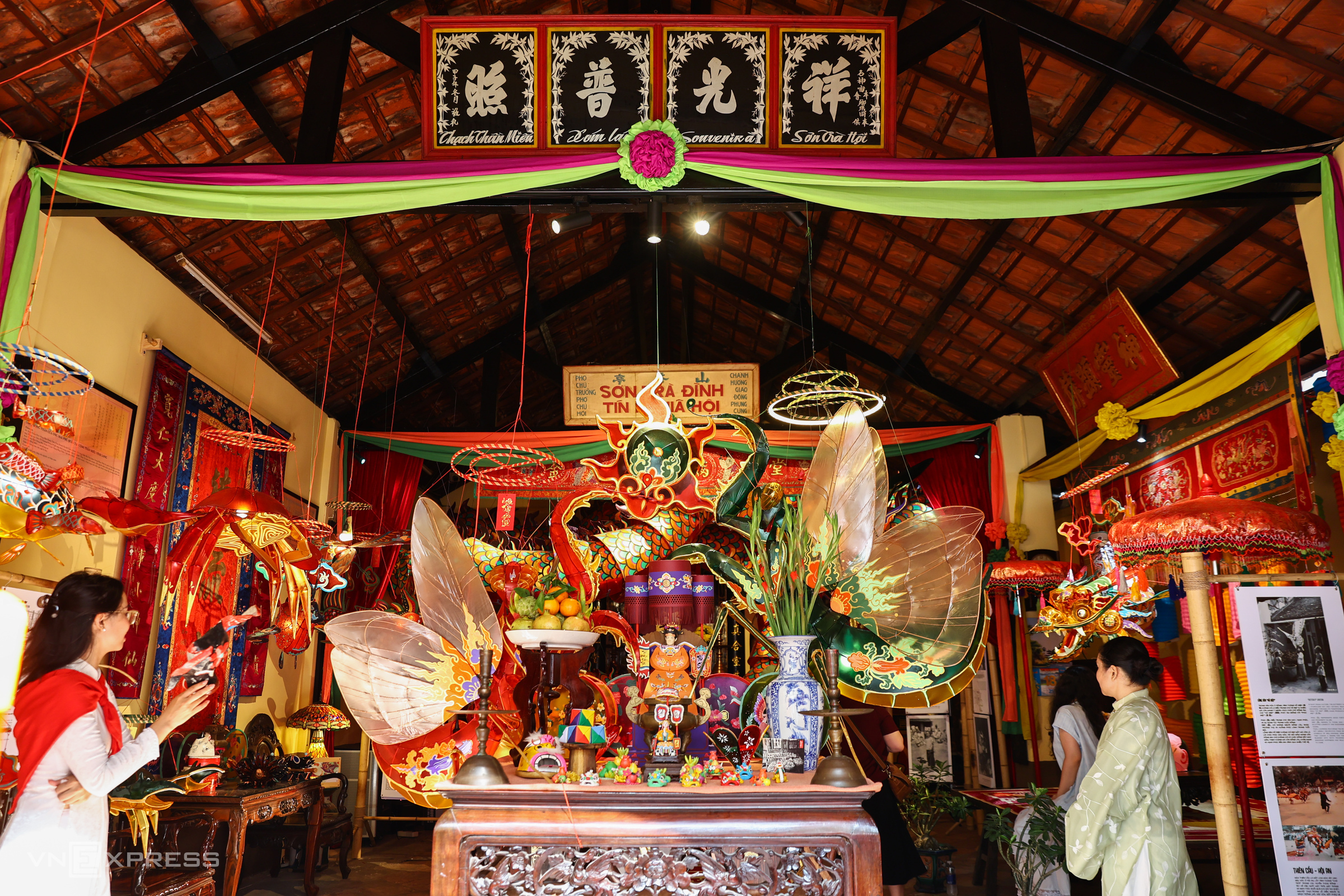 |
Other lantern designs, such as Ngu Long Kim Hoa, Ly Ngu Hoa Long, Cu Giai, and Ho Diep, are also on display. These are all handcrafted traditional lanterns, recreated based on historical designs. *Italicized author/source* |
Since August 23rd, Son Tra Communal House has been transformed into a vibrant display of traditional Mid-Autumn Festival decorations, featuring an array of colorful, nostalgic lanterns.
The lanterns were crafted by members of the Khoi Dang Tac Khi group over nearly a year. "For the past three years, our group has focused on creating traditional lanterns to preserve a fading cultural aspect and help people better understand the Vietnamese Mid-Autumn Festival of the past," said Nguyen Minh Nguyet, a group representative.
Son Tra Communal House was built by the Quang Nam-Da Nang community in the 1860s. Like many other communal houses in southern Vietnam, it serves as a place of worship for the village guardian spirit and a spiritual space for people to pray for peace, prosperity, and community bonding.
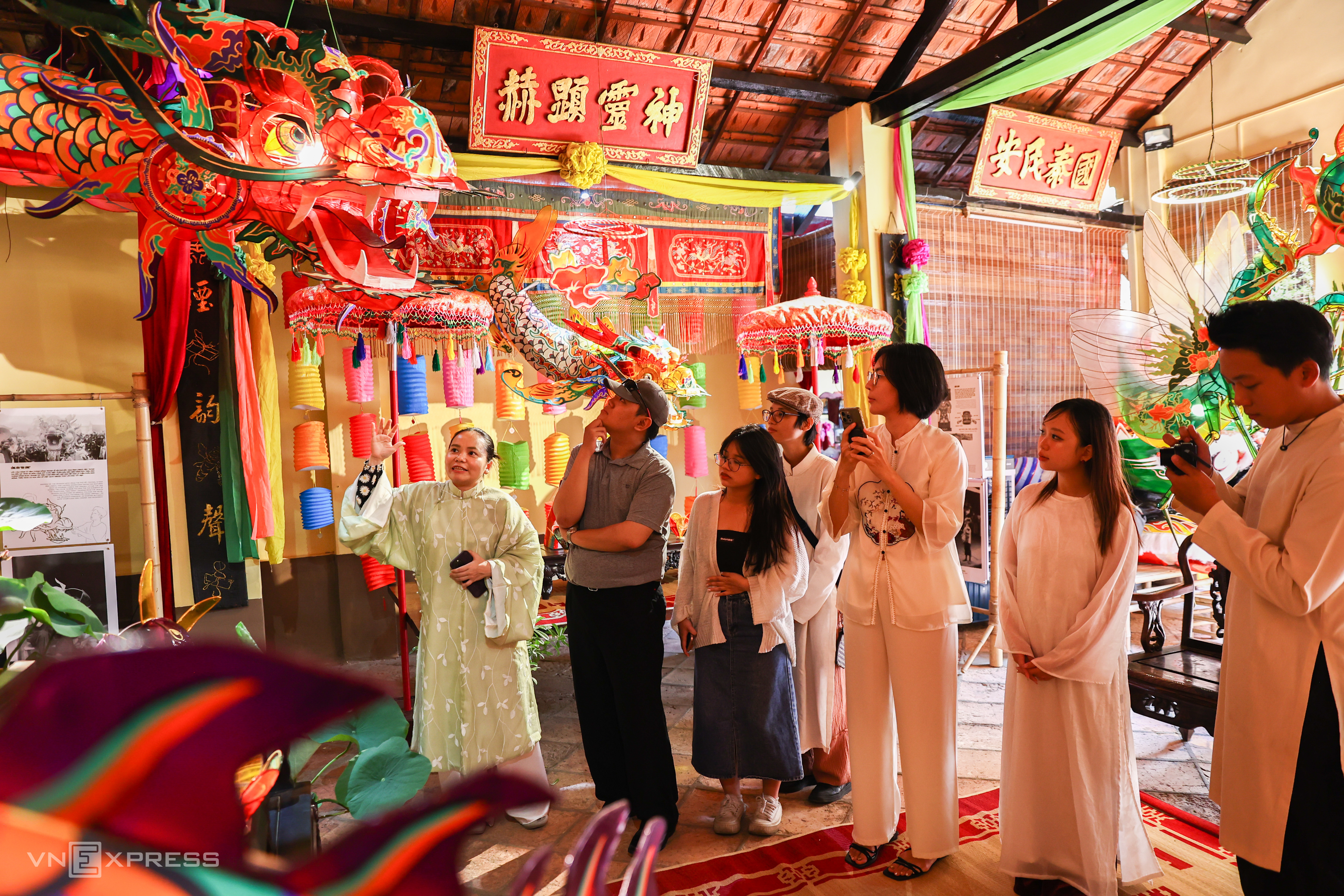 |
Two lantern designs, Cu Giai (crab) and Ca Chep Hoa Rong (carp transforming into a dragon), are hung in the communal hall. These intricate lanterns require meticulous crafting due to their small details, as loose paper would affect the painting process. *Italicized author/source* |
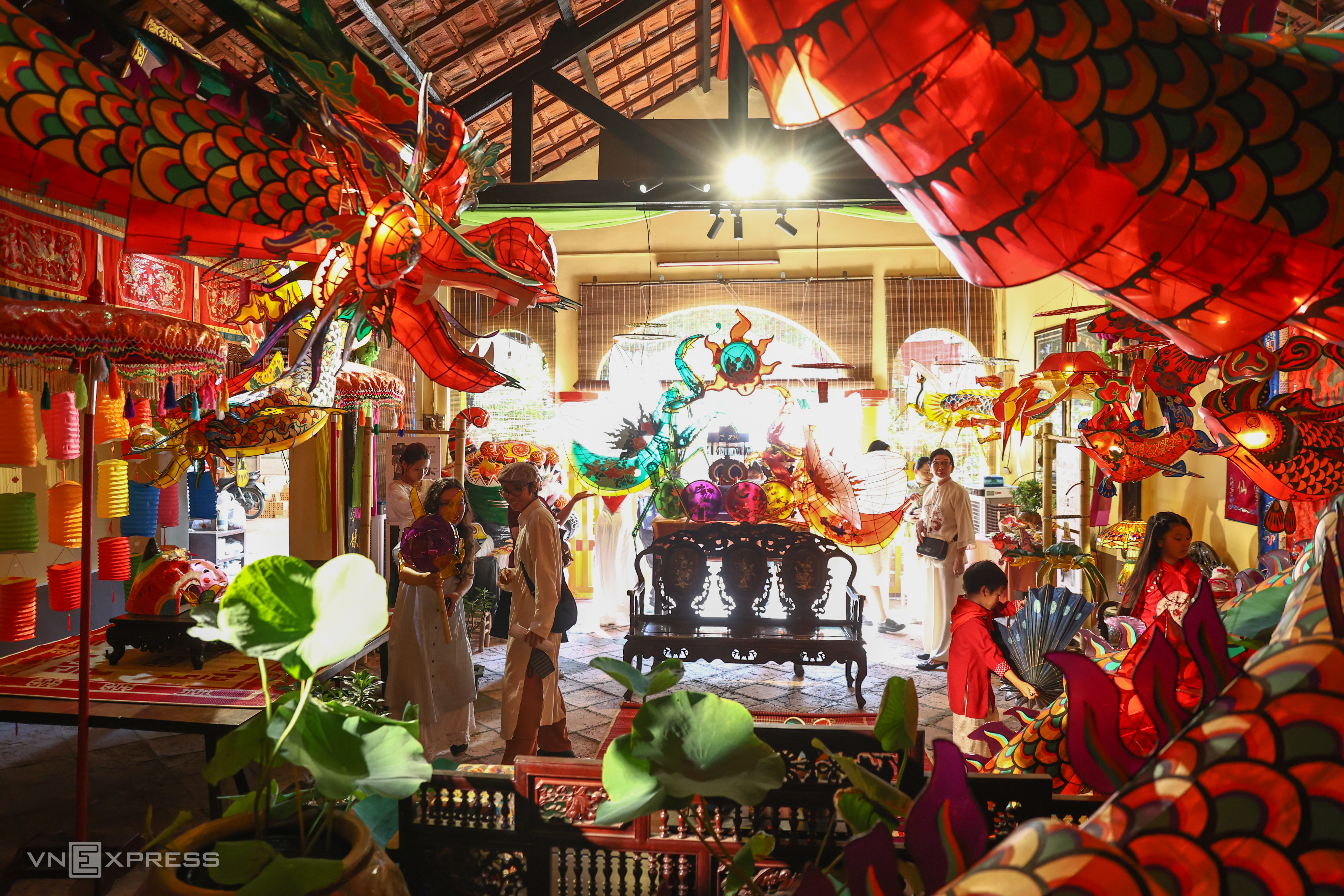 |
It took the group a week to arrange the spaces, creating a traditional and nostalgic atmosphere for visitors to enjoy. *Italicized author/source* |
Within the approximately 80 square meter communal hall, Minh Nguyet (left) explains the historical lanterns replicated by the group. Around 40 traditional lanterns are on display, featuring various designs such as dragons, grasshoppers, praying mantises, carp, crabs, and rabbits.
According to Minh Nguyet, this year's theme is "The Sky Horse Steals Fire." "Sky horse" is an old name for the praying mantis, a name that has recently faded, contributing to a loss of cultural diversity. Additionally, the praying mantis is now on the endangered species list. The group aims to convey the message that if traditional cultural elements are not preserved, they will be lost forever.
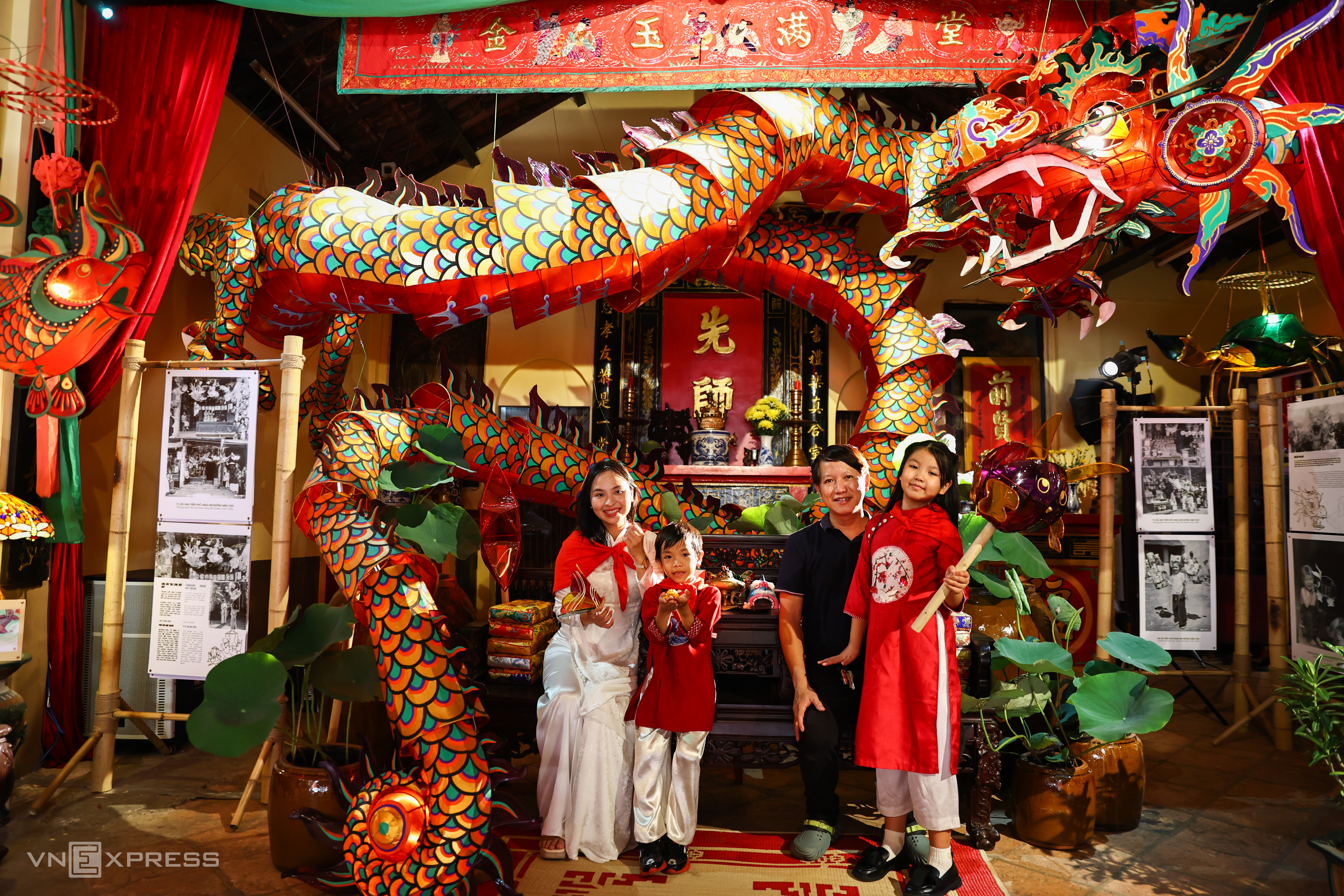 |
A visitor listens attentively as a guide describes the rabbit lantern, recreated from a 1920 photograph. *Italicized author/source* |
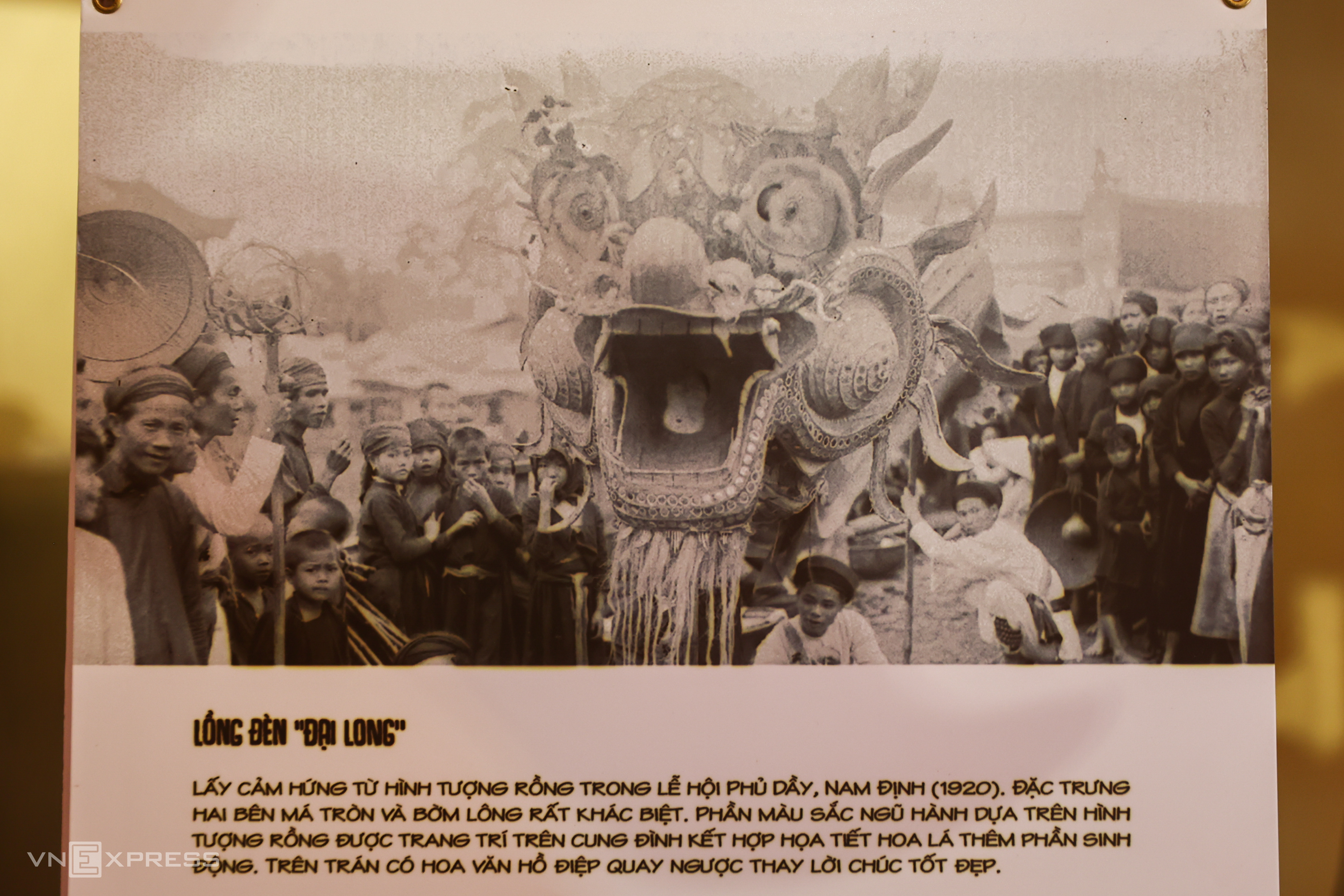 |
The area outside Son Tra Communal House. The event runs daily from 2 PM to 8:30 PM, until October 12th. *Italicized author/source* |
A highlight is the 20-meter-long stained-glass dragon lantern named Dai Long. Its design was inspired by a photograph of a dragon lantern procession at a Phu Day festival (Nam Dinh) over a century ago. The original lantern is also showcased through archival images (pictured behind).
The space is further decorated with antique furniture, mats, lotus flower displays, and the communal house's altar, providing photo opportunities for visitors. "I'm impressed by the large, meticulously crafted dragon lantern. Seeing this handcrafted piece, so vibrant and detailed, shows how many beautiful lantern designs existed in Vietnam's past," said Kim Huong, 37, while taking photos with her family.
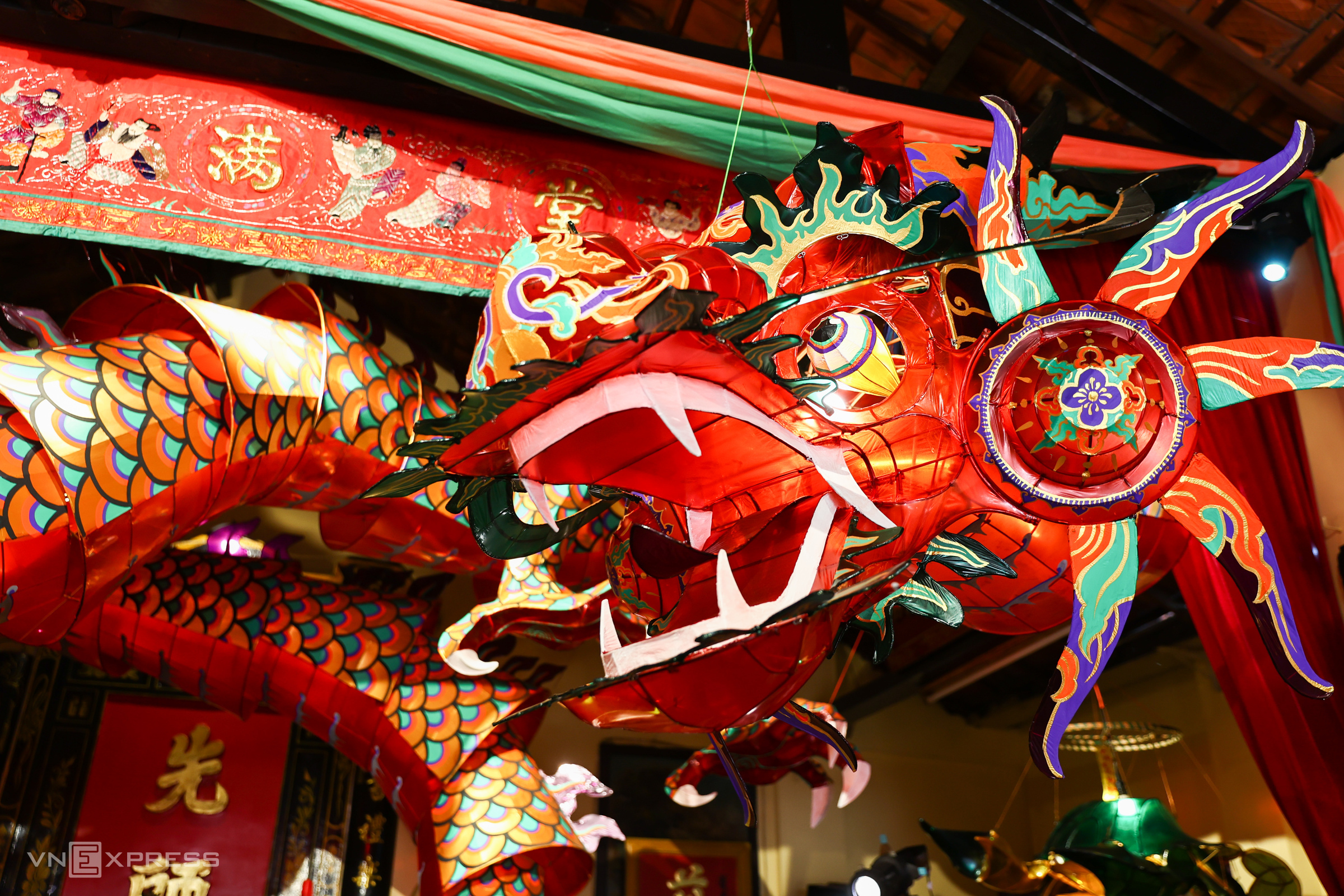 |
Due to limited documentation on ancient lanterns, the group could only recreate the lanterns based on their best understanding, rather than restoring them to their original state.
The frames are made of bamboo, which is flexible and pliable, despite its higher cost compared to other materials. Bamboo lanterns are durable and can last for many years, even if the joints loosen. Because of the dragon's curved shape and intricate details, especially the head, it took the artisans about three months to complete. The dragon's body and head were made separately and transported by truck.
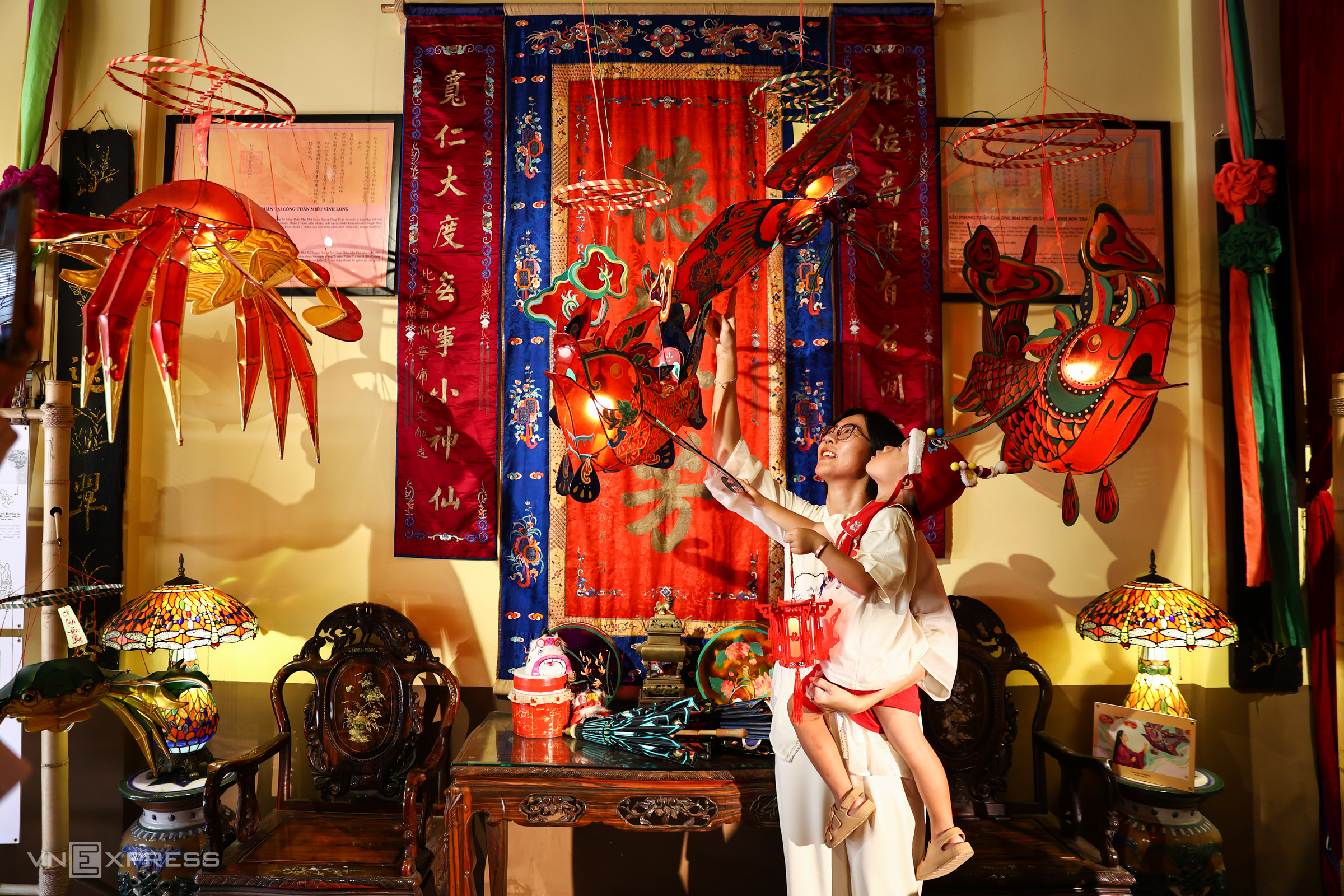 |
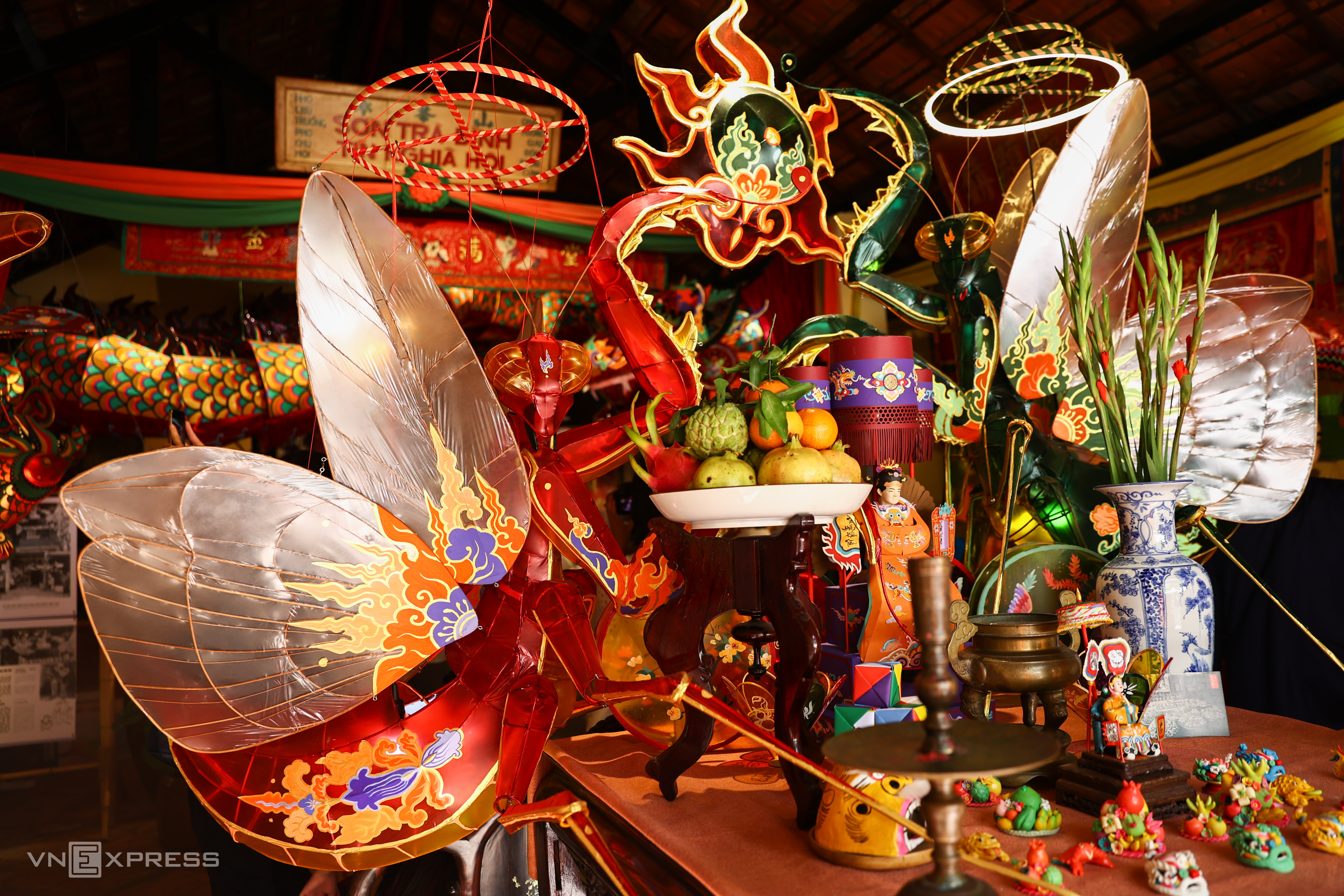 |
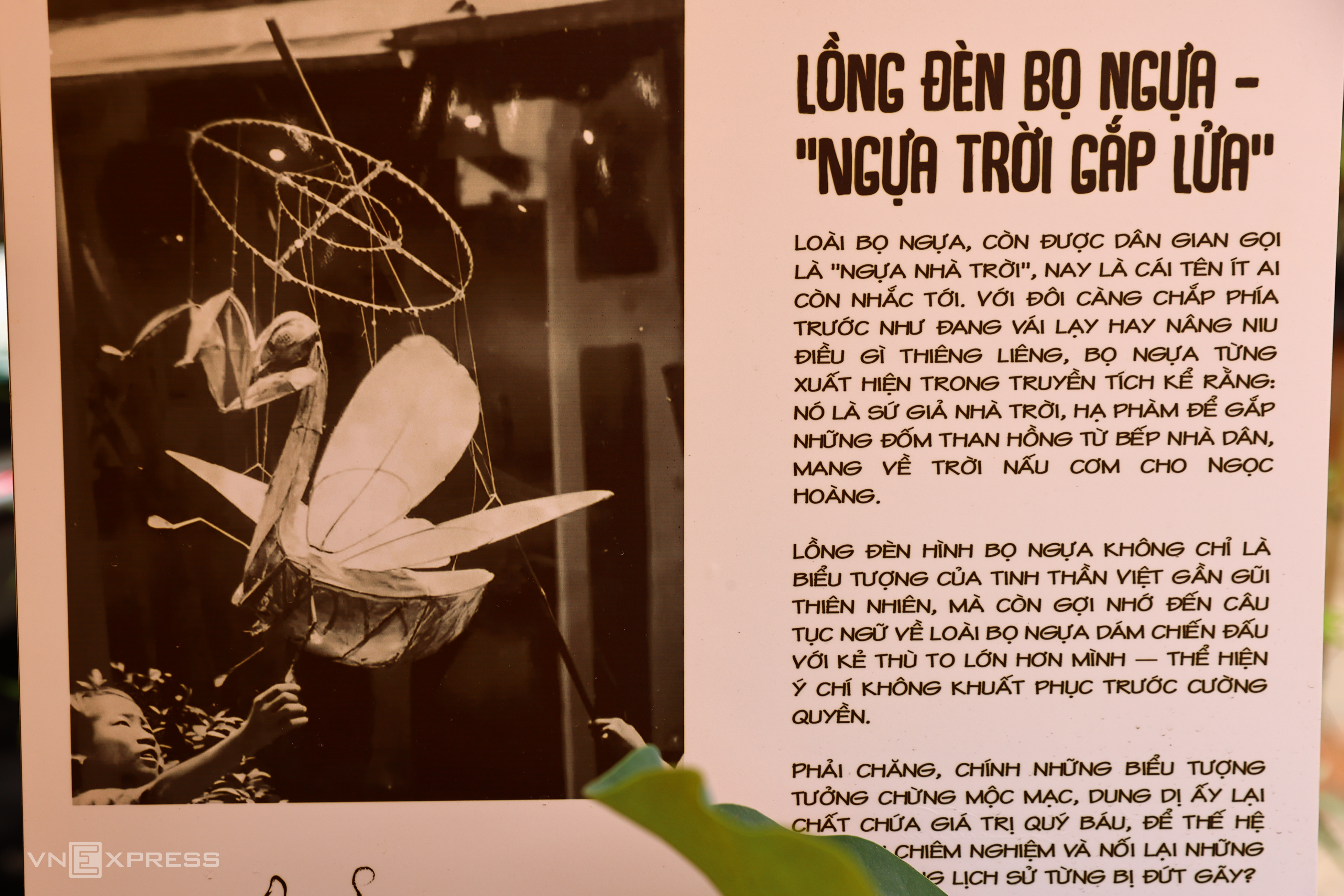 |
The praying mantis lantern is the group's latest creation, based on old photographs. The pincers were the most challenging part to create, requiring skilled artisans and significant time to bend the frame into a smooth shape.
The praying mantis lantern not only represents nature but also symbolizes the Vietnamese spirit of facing stronger adversaries with unwavering resolve.
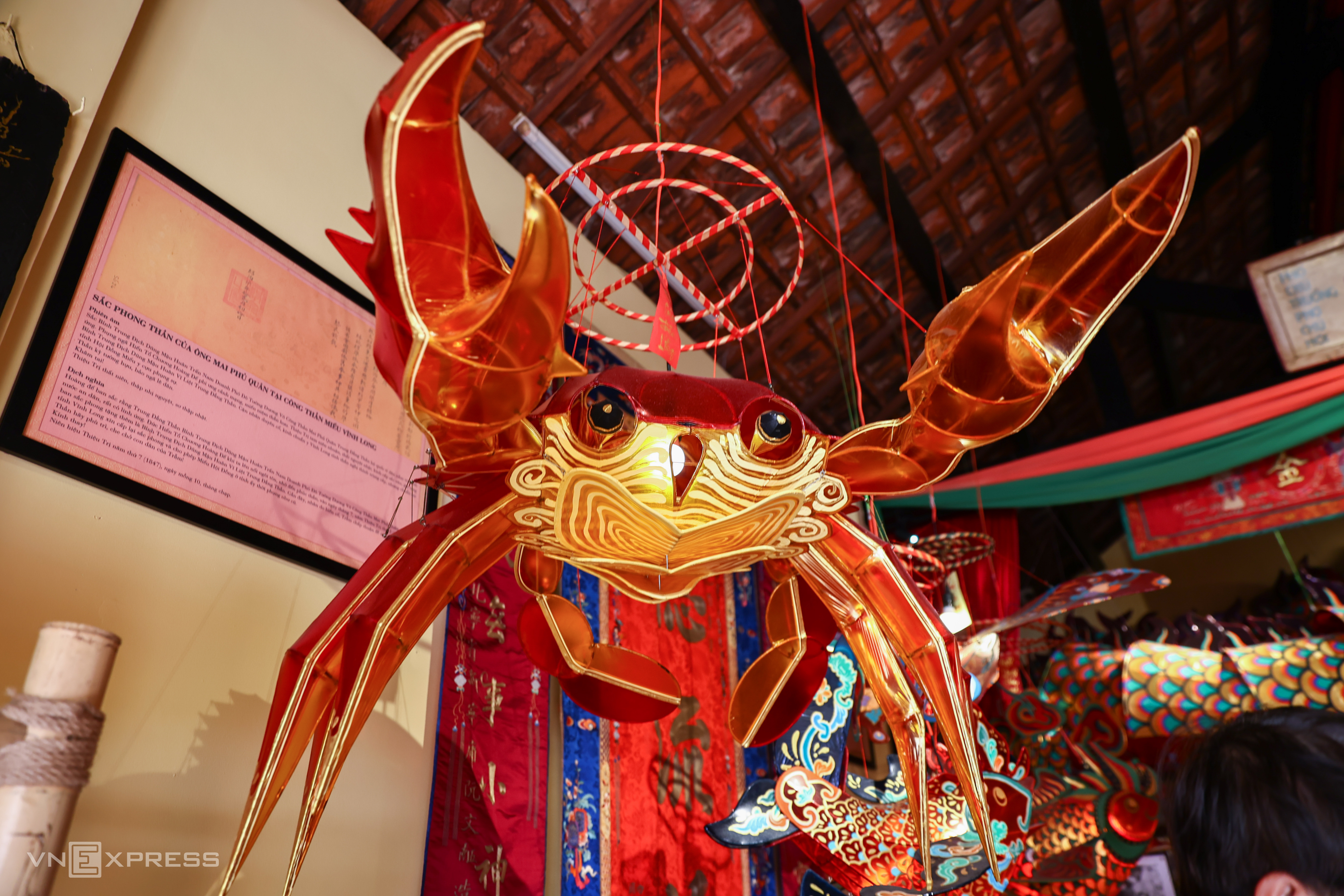 |
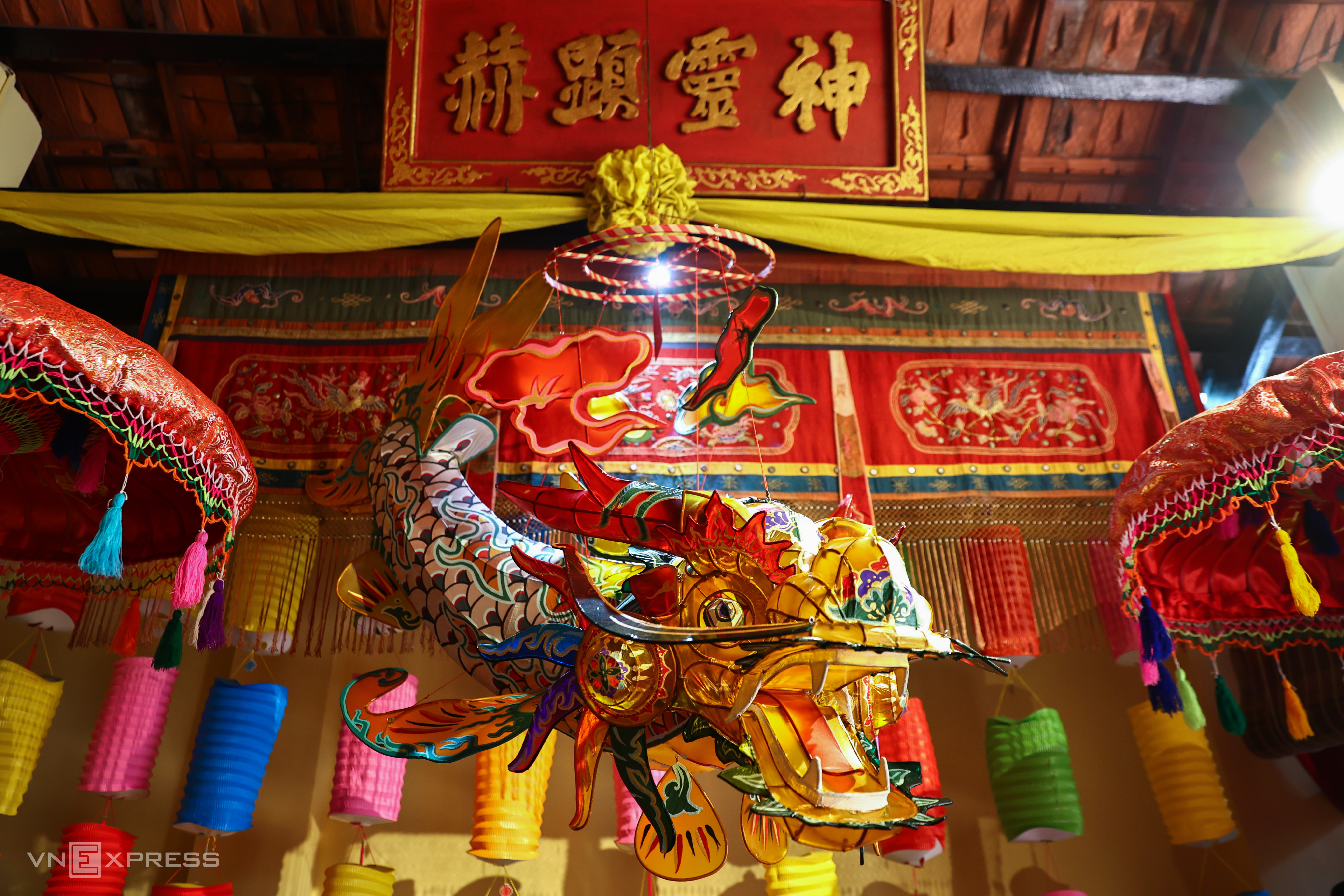 |
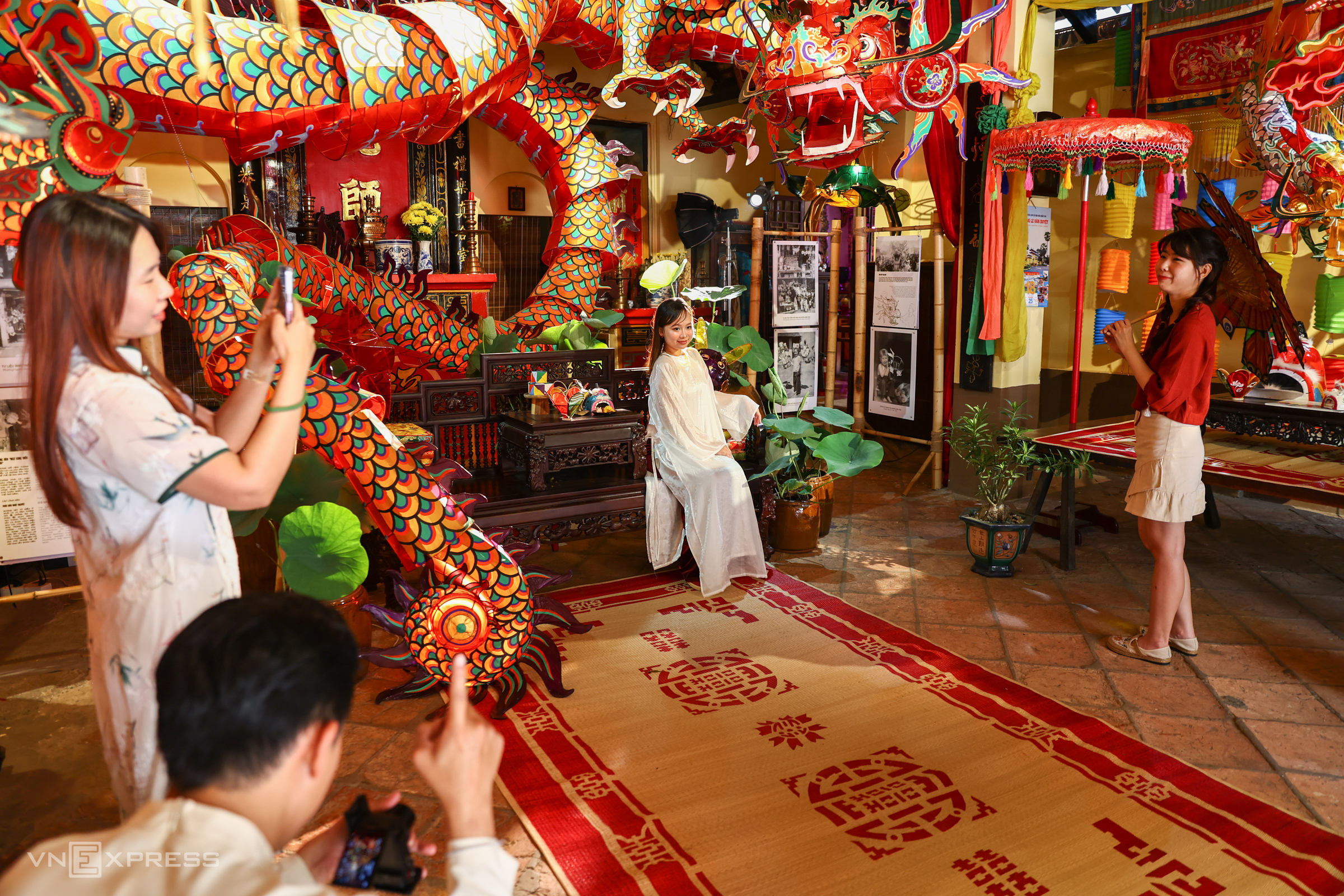 |
The event has attracted many young people for photo opportunities. Each visitor has 35 minutes to explore, enjoy snacks and tea, and listen to presentations about the history of Mid-Autumn Festival and the lantern designs.
"The beautifully decorated spaces showcasing the traditional Mid-Autumn Festival helped me learn more about our cultural heritage while getting some great photos," said Vu Thuy Khue, 26 (second from left).
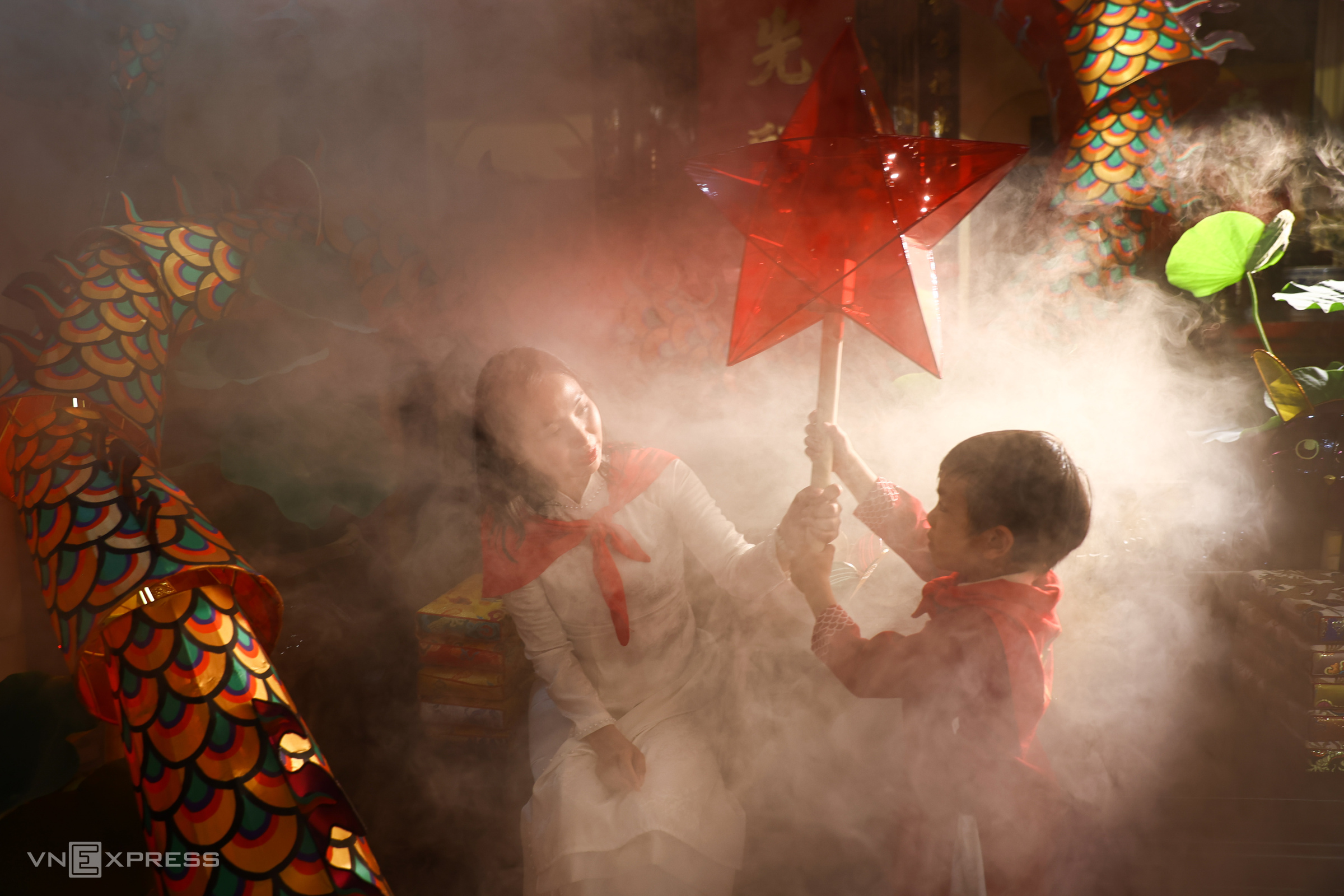 |
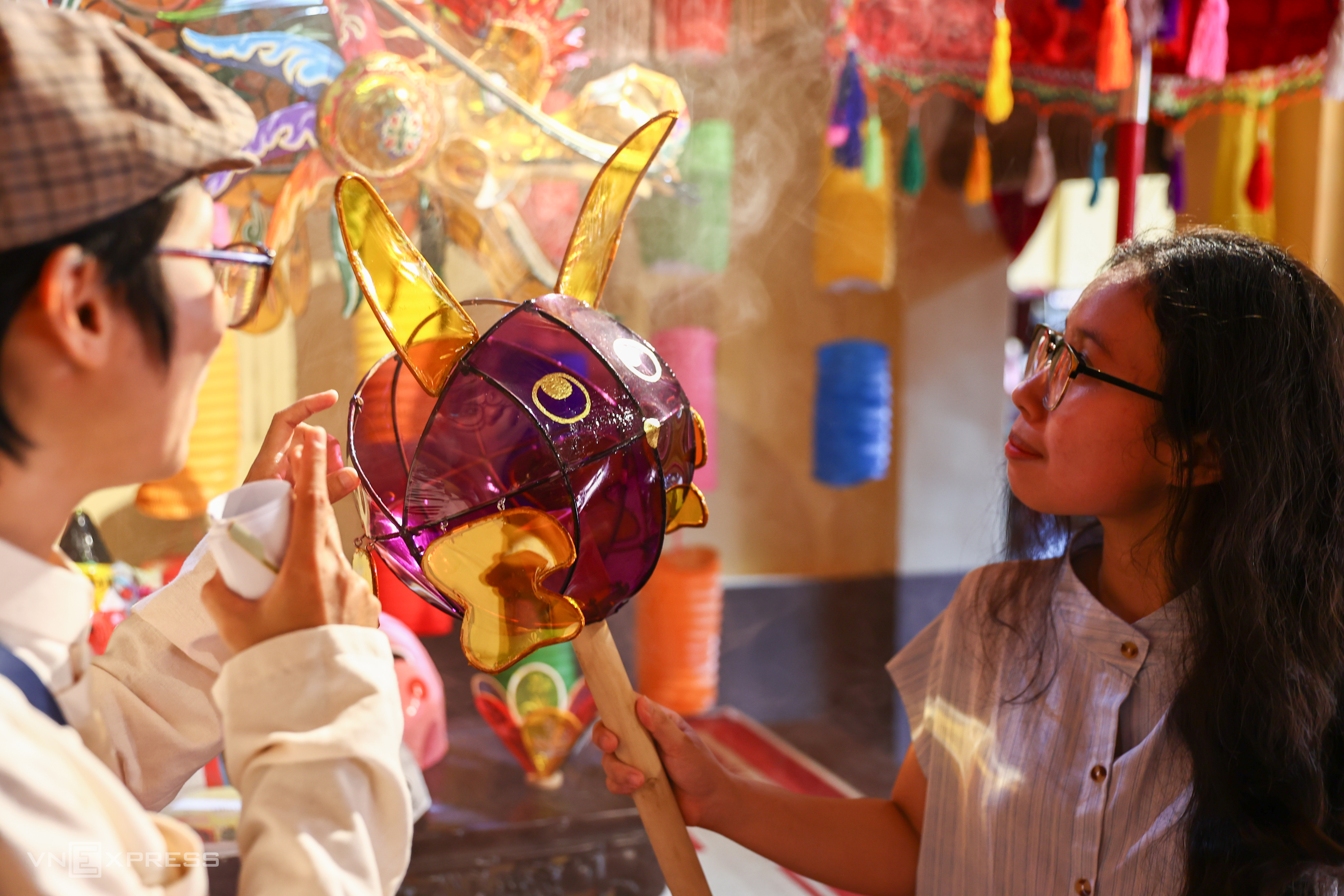 |
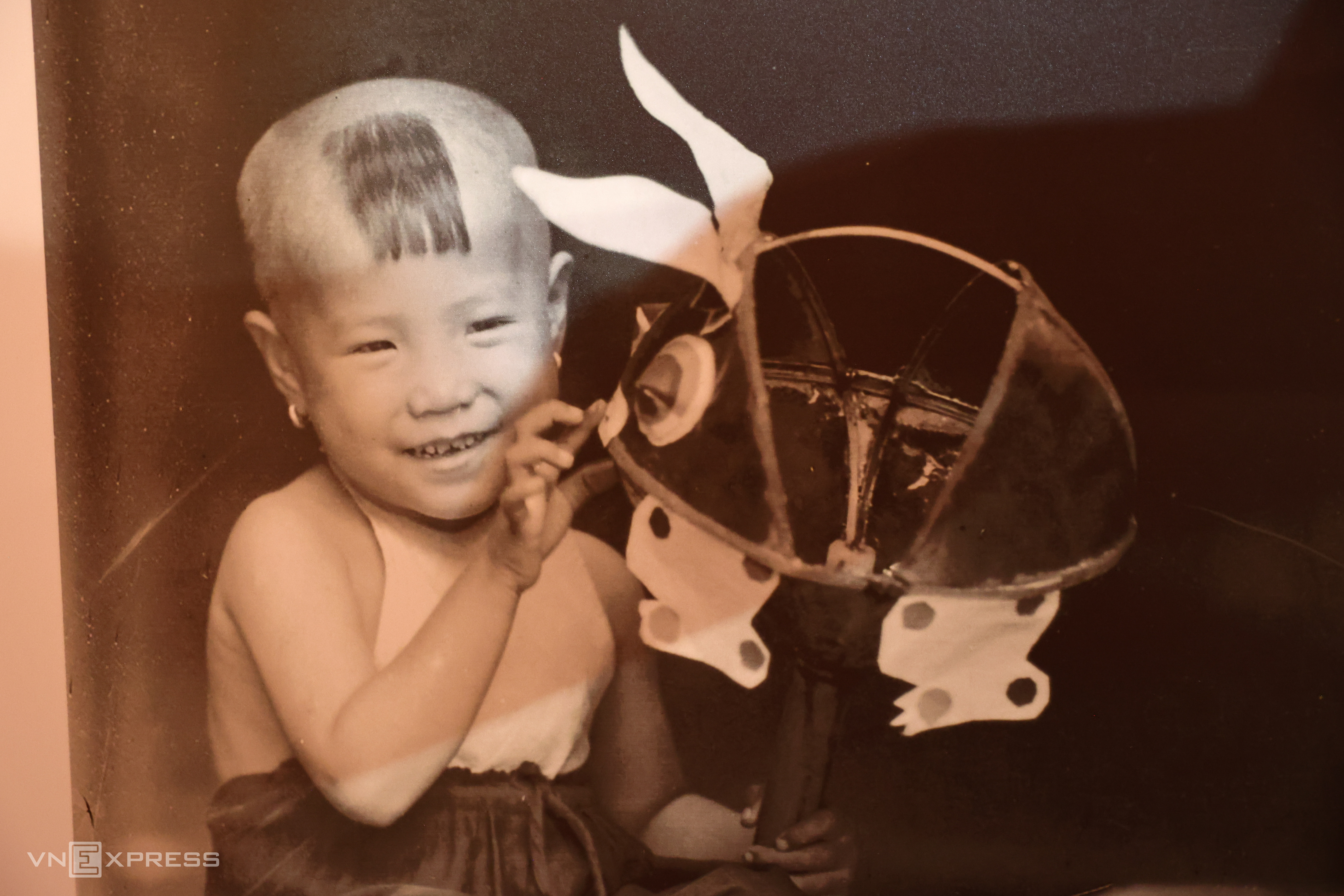 |
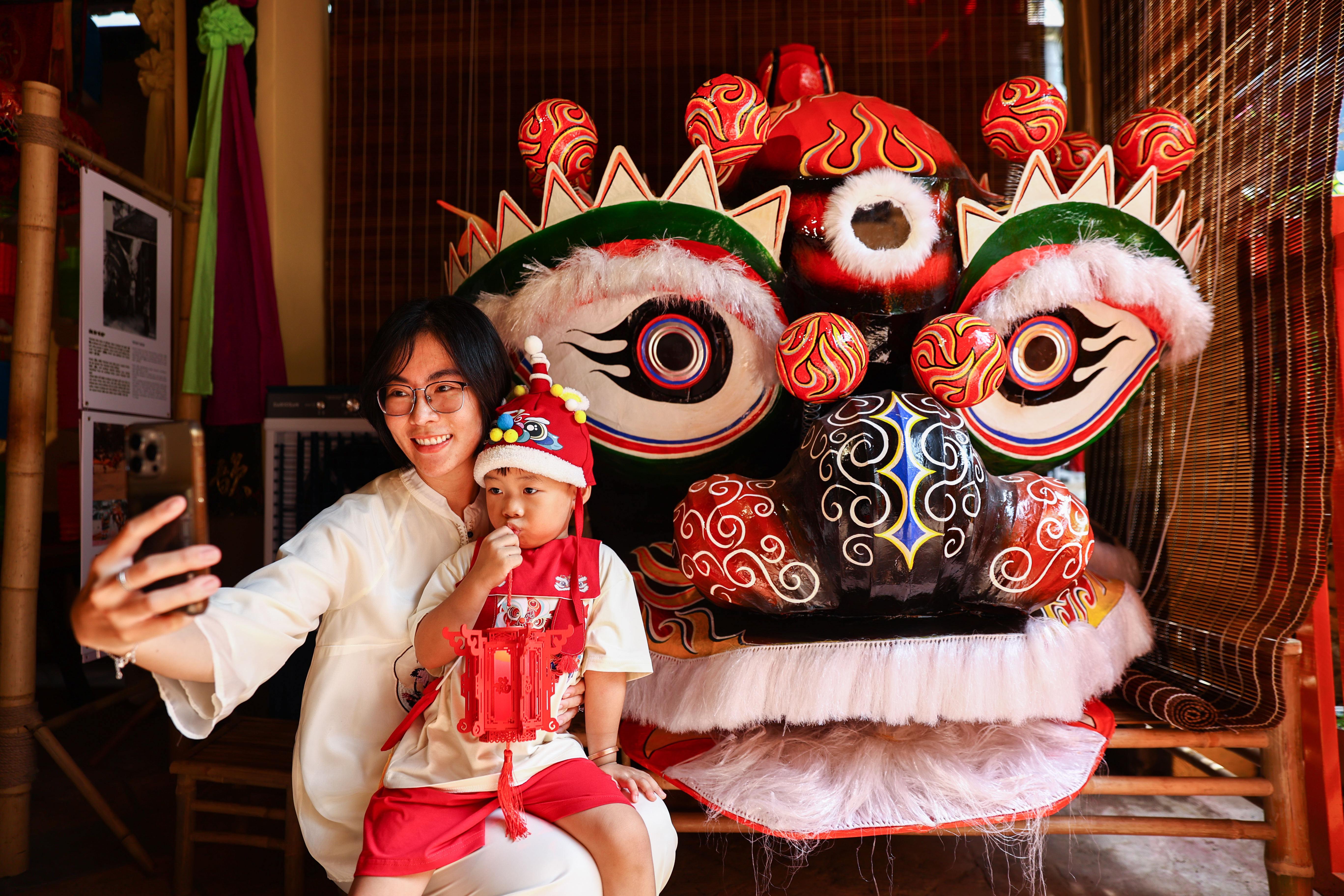 |
Hai Yen, 33, and her son pose for a photo with the Thien Cau (heavenly dog) model.
Thien Cau is often regarded in folklore as the "sky dog" that devours the moon and sun, causing lunar and solar eclipses. During these events, people traditionally banged drums and pots and pans to "chase away Thien Cau" and bring back the light.
In northern Vietnam, in addition to traditional lanterns like star, carp, and butterfly lanterns, the Thien Cau lantern once represented folk beliefs, recalling the tale of the "sky dog eating the moon."
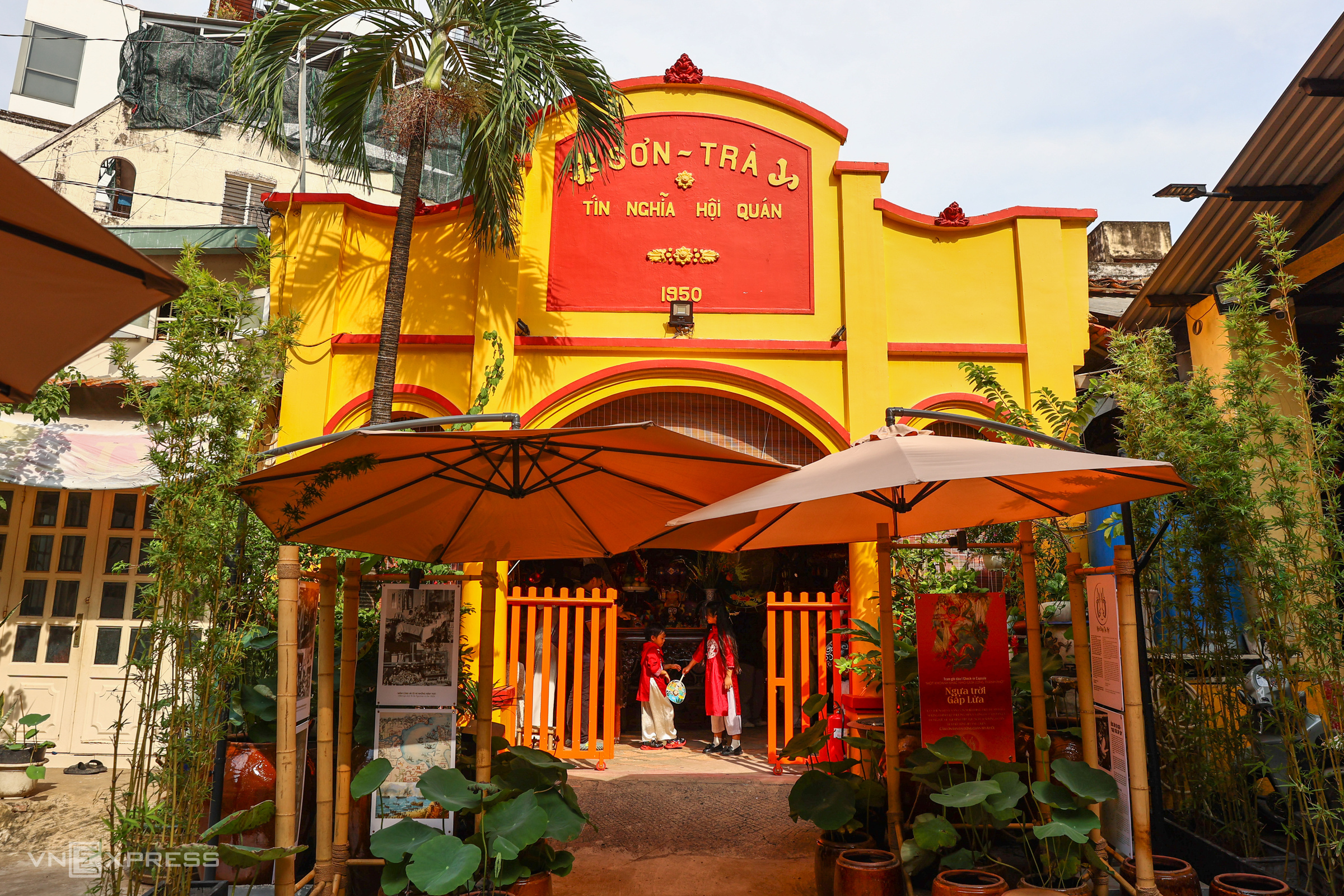 |
Quynh Tran




